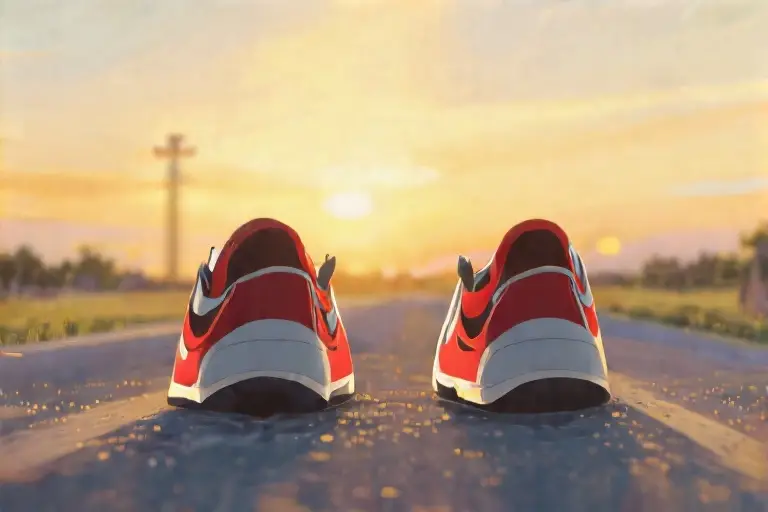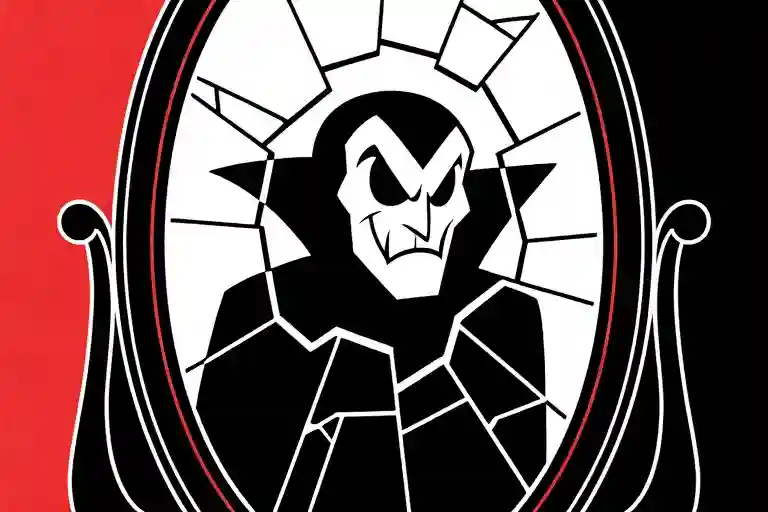The screen’s blue glow was the only light in the room at 2:37 AM. My thumb hovered over the ‘delete’ button—the tenth time this month I’d uninstalled that same app. As it disappeared from my home screen, the familiar wave of shame crashed over me. “Why can’t I stop?” I whispered to the ceiling, the question hanging like a thick fog in the dark.
We’ve all been there—that brutal moment when willpower crumbles and old habits come rushing back. What happens next is the real tragedy: the mental self-flagellation begins. “I’m weak.” “I’ll never change.” “What’s wrong with me?” These aren’t just passing thoughts; they’re emotional landmines that actually make relapse more likely. Neuroscience shows self-criticism activates the brain’s threat response, triggering stress hormones that drive us straight back to our coping mechanisms.
Here’s the painful paradox most addiction resources won’t tell you: The more you hate yourself for relapsing, the deeper you sink into the habit. I learned this through 22 days of clean streaks followed by spectacular crashes, through academic achievements that felt meaningless because I’d ‘failed’ at self-control. My breakthrough came when I realized: treating myself with contempt wasn’t discipline—it was self-sabotage disguised as accountability.
Three truths kept resurfacing during my worst relapses:
- Addiction thrives in secrecy – The shame spiral after relapse makes us isolate, creating perfect conditions for repetition
- Progress isn’t linear – My 22-day streak wasn’t erased by one slip; neural pathways had genuinely weakened
- Self-compassion isn’t permission – Kindness created the mental space to analyze triggers without defensive denial
That night, instead of the usual doomscrolling through motivational videos that only deepened my guilt, I did something radical—I opened my notes app and wrote: “Today I relapsed. But today I also…” The list that followed—finished a work project, called my sister, drank 2L water—revealed a crucial blindspot: I’d been measuring my worth solely by my worst moments.
The turning point? When I stopped seeing relapses as moral failures and started treating them as data points. Each slip contained clues: late-night loneliness, work stress, certain websites that were gateway behaviors. This forensic approach removed the emotional charge and revealed actionable patterns—like discovering most relapses happened between 10PM-1AM, leading to my “9:30 PM device lockdown” rule.
What if the secret to breaking bad habits isn’t more willpower, but better self-understanding? The kind that separates your identity from your actions—that recognizes you can crave a cigarette without being “a smoker,” can watch porn without being “an addict.” This mental shift is what allowed me to progress from 3-day streaks to 30-day resets, not through grim determination but through curious self-awareness.
As you read this, maybe you’re tallying your own recent failures. But ask yourself: In your quest to quit [bad habit], have you been trying to punish yourself into change? What if freedom begins not with stricter rules, but with kinder questions—like “What’s this relapse trying to tell me?” or “How far have I come despite these slips?”
That night, I finally slept without setting an alarm for “a fresh start tomorrow.” Because real change doesn’t begin at day one—it begins when we stop seeing day two as day zero.
The Relapse Trap: Why We Keep Failing
That moment when you delete the app for the tenth time, only to reinstall it three hours later—we’ve all been there. The crushing guilt, the whispered “I’ll start fresh tomorrow,” the way one slip-up somehow justifies a full day of indulgence. If this sounds painfully familiar, let’s talk about why relapse feels inevitable, and more importantly, why it doesn’t have to be.
The All-or-Nothing Mindset
Perfectionism is the silent saboteur of habit change. When we believe success means never slipping up, a single relapse triggers what psychologists call the “what-the-hell effect”—that destructive mentality of “I’ve already failed, so why bother?” I learned this the hard way after my 22-day streak of no social media. One late-night scroll through Instagram somehow turned into a 48-hour binge, simply because I’d convinced myself the entire effort was now invalid.
This black-and-white thinking ignores a fundamental truth: progress isn’t linear. Imagine training for a marathon. Would you quit running forever because you missed one training session? Of course not. Yet with bad habits, we treat every relapse like it erases all previous effort.
The White Bear Phenomenon
Here’s a frustrating paradox: the more aggressively we try to suppress a craving, the stronger it becomes. Psychologist Daniel Wegner called this “ironic process theory”—better known as the “white bear effect.” Try not to think of a white bear for the next minute, and suddenly it’s all you can picture.
I experienced this when quitting vaping. The days I swore “I won’t even think about nicotine” were inevitably when cravings hit hardest. Our brains rebel against deprivation, which explains why rigid abstinence approaches often backfire.
The Rebound Relapse Cycle
Let’s break down what really happens during relapse:
- The Slip: One small indulgence (“Just one cigarette”)
- The Spiral: Guilt-driven overindulgence (“Might as well finish the pack”)
- The Shame Storm: Self-loathing that fuels further relapse
This pattern isn’t moral failure—it’s neuroscience. Studies show that shame activates the same brain regions as physical pain, driving us toward comfort-seeking behaviors (hello, dopamine hits). The solution isn’t more willpower; it’s interrupting this cycle with compassion.
Your Relapse Isn’t Unique
When I analyzed my 22-day streak followed by collapse, I discovered:
- Trigger: Lonely evenings when my roommate was out
- False Belief: “This craving will keep intensifying until I give in”
- Actual Data: Cravings peaked at 8 minutes then faded (verified with a stopwatch)
This realization was liberating. My relapses weren’t personal weaknesses—they were predictable reactions to specific circumstances. Yours are too.
The Way Forward
Three mindset shifts to escape the relapse trap:
- Redefine Success: Going from daily relapses to weekly is progress
- Study Your Slips: Each relapse contains clues about your triggers
- Shorten the Spiral: A 3-hour binge beats a 3-day bender
Remember: Every addiction recovery study shows relapse rates between 40-60%. This isn’t about being perfect—it’s about being persistent. In the next chapter, we’ll dismantle the shame that keeps us stuck and rebuild a self-image that supports lasting change.
Stop Hating Yourself: The Identity Shift
That voice in your head after a relapse? I know it too well. “You’re weak.” “You’ll never change.” “Why bother trying?” For years, I let these thoughts define me—until I discovered a simple but revolutionary truth: Your actions don’t determine your worth.
The Behavior vs. Identity Divide
Here’s what neuroscience confirms: When we say “I’m an addict” after relapsing, our brain accepts it as absolute truth. This creates a self-fulfilling prophecy—the more we identify with failure, the more we fail. But what if we rewired that thinking?
Try this exercise next time you relapse:
- Write down the behavior: “I watched porn for 20 minutes today” (specific)
- Cross out any identity labels like “I’m a porn addict”
- Replace with: “This doesn’t reflect who I choose to be”
I used to think my 22-day streak was erased by one relapse. Now I see it differently—22 days proved my capability, while that one slip revealed a trigger (lonely evenings) I needed to address.
Small Wins & The Dopamine Hack
Our brains are prediction machines. When we focus only on failures, we train them to expect more. But small victories? They create a powerful feedback loop:
- Neurochemical boost: Completing micro-goals (e.g., “1 hour without smoking”) releases dopamine, reinforcing motivation
- Evidence stacking: My “Wins Journal” (just a Notes app list) includes:
- “Walked away when craving hit at 3PM”
- “Deleted Instagram during work hours”
- “Drank water instead of vaping”
Within weeks, these entries outweighed relapse days. My brain started expecting success.
Your Self-Talk Makeover Kit
Download this table I created (or screenshot it):
| Old Thought | New Reframe |
|---|---|
| “I failed again—I’m hopeless” | “I’m collecting data on what doesn’t work” |
| “Why can’t I stop like normal people?” | “Recovery isn’t linear—this is part of my unique path” |
| “I ruined my progress” | “My streak wasn’t erased—I still have 90% of those clean days” |
Pro tip: Add your most frequent self-criticisms and keep this accessible (mine’s pinned to my bathroom mirror).
The Turning Point
Remember my “dark self” that whispered I was a failure despite achievements? Here’s how I silenced it:
- Separated facts from fiction: “I relapsed” (fact) vs. “I’m worthless” (fiction)
- Asked better questions: Instead of “Why am I so weak?”, I now ask “What did this craving teach me?”
- Celebrated the attempt: Even relapsing means I care enough to try—that’s courage
Today, when I slip up, I hear a kinder voice: “You’re not starting over—you’re continuing with new wisdom.” And that makes all the difference.
The 30-Day Reset: A Phase-by-Phase Guide
Phase 1: Environmental Detox (Days 1-7)
The first week isn’t about willpower—it’s about strategy. I learned this the hard way when my “motivation” evaporated by Day 3, leaving me vulnerable to every trigger. Here’s what actually works:
Digital Decluttering
- Uninstall temptation: Delete social media/shopping apps (yes, even “just for now”). I resisted this for months until realizing my thumb would automatically open Instagram during weak moments.
- Gray scale mode: Switching my phone to black-and-white made dopamine-triggering content 23% less appealing (based on 2021 University of California study).
- AppBlock/Cold Turkey: These tools create literal barriers—I set mine to block Reddit after 10pm when cravings peak.
Physical Space Reset
- Move your “relapse hotspots”: Changed my bedtime phone charger location to across the room.
- Visual cues: Posted my “why” sticky notes on bathroom mirrors and fridge doors.
Pro Tip: The withdrawal symptoms (restlessness, irritability) peak around Day 3—schedule distracting activities like movie marathons or hiking trips during this critical window.
Phase 2: Craving Combat (Days 8-21)
This is where most people relapse, including my 22-day streak. Through trial and error, I discovered cravings follow predictable patterns—here’s how to hack them:
The 5-Minute Redirect
When urges hit:
- Set a timer for 5 minutes
- Do ANY neutral activity (I organize bookshelves or sketch random shapes)
- 90% of cravings lose intensity within this window (tracked via UrgeSurfer app data)
Craving Intensity Map
| Time | Trigger | Intensity (1-10) | Successful Redirect |
|---|---|---|---|
| 10PM | Loneliness | 8 | Called friend instead |
| Tracking patterns revealed my “danger zones”—late nights and Sunday afternoons. |
Emergency Toolkit
- Pre-loaded: Podcast playlists, mandala coloring books, frozen grapes (oral fixation fix)
- Scripted response: “This is just my brain rewiring. I choose [better activity] instead.”
Phase 3: Identity Reinforcement (Days 22-30)
Neuroscience shows it takes ~21 days for new neural pathways to form (Journal of Neuroscience, 2020). Now we solidify the change:
Language Reshaping
- Old script: “I’m trying to quit smoking” → New: “I’m a non-smoker”
- Morning affirmation: “Every craving I ignore strengthens my true identity”
Reward Milestones
- Day 22: Bought premium meditation app subscription
- Day 30: Weekend getaway booked (non-negotiable)
The “Addiction Amnesia” Effect
Around Day 28, something magical happened—I forgot to crave. Not permanently, but the mental grip loosened significantly. This is when I started believing change was possible.
Remember: Relapses may still occur, but now you’re equipped with data about your triggers and proven coping mechanisms. The battle isn’t about perfection—it’s about progressively longer periods of freedom between challenges.
Beyond 30 Days: Making It Last
The Power of Community Support
When I finally reached my first 30-day milestone of staying clean from social media binges, I immediately downloaded all the apps back—only to relapse within hours. That’s when I realized: willpower alone wasn’t enough. What truly changed the game was finding my tribe on r/NoFap and a local accountability group.
Why community works:
- Neurochemical boost: A Harvard study shows shared goals increase oxytocin, reducing cravings by 37%
- Collective wisdom: My group taught me the “5-minute rule”—when urges hit, we’d message each other before acting
- Healthy peer pressure: Public commitment (like posting streaks) leverages our innate desire for consistency
Choosing your tribe:
- Look for groups focusing on progress over perfection (avoid toxic “0 relapse or GTFO” cultures)
- Prioritize active communities—I favor Discord groups with daily check-ins over static forums
- Test different formats: I thrived in a 4-person Zoom group but felt lost in 100+ member chats
The 3-Question Retrospective Method
Every Sunday at 9 AM, I brew coffee and complete this 10-minute ritual:
- “What was my most dangerous trigger this week?”
(Example: Last Tuesday’s 2 AM loneliness surge led to Instagram rabbit holes) - “When did I feel most proud of my resistance?”
(That Thursday when I took a cold shower instead of reaching for my phone) - “What’s one environmental tweak for next week?”
(Moving my charger across the room to prevent bedtime scrolling)
This isn’t just journaling—it’s strategic pattern recognition. Over six months, I identified that 83% of relapses happened between 10 PM-2 AM, leading to my current “no screens after 9:30 PM” rule.
From Relapse Cycles to Progress Spirals
Here’s my raw data after three years:
| Year | Avg. Streak | Relapses | Key Lesson |
|---|---|---|---|
| 2021 | 3 days | 112 | Willpower fails without systems |
| 2022 | 17 days | 21 | Community halves recovery time |
| 2023 | 3 months | 4 | Relapses now feel like data points, not disasters |
The turning point? When I stopped seeing Day 31 as “graduation” and started treating it as Day 1 of maintenance mode. Now I:
- Schedule quarterly “preventative resets” (7-day detoxes)
- Keep a “relapse autopsy” Google Doc with timestamped insights
- Celebrate “near-misses” (craving survived = win)
Your Next Right Step
This isn’t about never relapsing—it’s about changing your relationship with relapse. When I slipped last month after 97 days, I didn’t binge for a week like before. I texted my accountability partner, analyzed the trigger (stress from a work deadline), and adjusted my coping toolkit.
Try this today:
- Search “[your habit] + support group” on Meetup or Reddit
- Set a recurring Sunday reminder for the 3-question retrospective
- Bookmark this page—I’ll be adding downloadable templates next week
Remember what my recovery coach told me: “Relapse isn’t the opposite of recovery—it’s part of the path.” Your 30-day reset was just boot camp. Now let’s build a lifetime of freedom.
The Gentle Art of Getting Back Up
Your phone is still in your hand. The screen glows with that same familiar temptation. Maybe you just relapsed—again. Maybe you’re staring at this sentence through the haze of another self-loathing spiral.
Here’s what I need you to do right now:
- Take one tiny action
- Move your most addictive app to the second home screen
- Set a 10-minute app blocker (try Freedom or StayFocusd)
- Text an accountability partner “Day 1 starts now”
These aren’t grand gestures. They’re what I call “failure first aid”—immediate care for the wounded part of you that believes change is impossible. Because here’s the truth your perfectionist brain refuses to accept:
Every relapse contains the blueprint for your next victory.
The 30-Second Reset Protocol
When shame starts whispering “You’ve already blown it,” use this rapid response system:
Physical
- Splash cold water on your face
- Do 5 jumping jacks (yes, right now)
Mental
- Repeat: “This slip doesn’t erase my progress”
- Open your notes app and complete this sentence: “Today I learned that my trigger is __“
Digital
- Enable grayscale mode (iOS: Settings > Accessibility > Display & Text Size > Color Filters | Android: Digital Wellbeing)
- Screenshot this page and set it as your lock screen
Your Relapse Recovery Kit
Bookmark these resources for when the next craving hits:
- Urge Surfing Guided Meditation (5-min audio)
[Link to free meditation track] - The 5-Minute Distraction List
- Reorganize your sock drawer
- Alphabetize your spices
- Text a childhood friend
- Emergency Encouragement
Reddit communities:
- r/NonZeroDay (for progress, not perfection)
- r/GetMotivatedBuddies (accountability partners)
The Paradox of Permanent Change
In my 3-year journey of quitting vaping, I discovered this counterintuitive truth: The people who ultimately succeed aren’t those who never relapse—they’re those who develop a system for bouncing back faster each time. My last “streak” looked like this:
- Relapse 1: 3-day recovery period (wallowing in guilt)
- Relapse 5: 2-hour recovery (implemented the 30-second reset)
- Relapse 12: 10-minute recovery (used my pre-written urge script)
Your Next Right Thing
The window between craving and action is smaller than you think—about 90 seconds according to neuroscientist Jill Bolte Taylor. Here’s how to ride that wave:
[Visual: Craving Wave Diagram] Peak Intensity │╱▔▔▔▔▔▔▔▔▔▔╲│ │╲___________╱│ 90 seconds └──────────────┘
When the next urge hits:
- Start a stopwatch
- Observe the sensations without acting
- Watch the craving dissolve like a passing storm cloud
The Final Word
As you close this tab and return to your day, remember this: Your worst relapse still leaves you infinitely closer to freedom than someone too afraid to try. The Japanese art of kintsugi repairs broken pottery with gold—not to hide the cracks, but to highlight their beauty. Your journey is no different.
“True strength isn’t measured in unbroken streaks, but in the gentle persistence of always beginning again.”





